Growing Strawberries
Growing strawberries is simple with a little know-how. They are not very fussy plants and will supply you with lots of delicious, fresh fruit to eat. Strawberry plants are perennial, meaning that they die down during autumn and winter and regrow the next spring. If you follow some simple steps, you’ll have an abundance of strawberries in your garden.
Strawberries can be eaten fresh or used in recipes to make jams, jellies and even wine.

How to grow strawberries
Choose a sunny location with well-draining soil and avoid planting in frost pockets. Strawberries need plenty of sunlight to grow well. They need an average of 6 hours of direct sunlight each day to thrive and and produce high yields of sweet fruit. Sunlight allows photosynthesis, a process in which the plant produces the energy needed to grow.
Sunlight also helps to stimulate hormone production in the plants that promotes fruit development. Without sufficient sunlight, there may be fewer berries and they may be less sweet or not as tasty.
Improve the soil by adding organic material like well-rotted manure or compost. This will help to retain moisture, improve soil structure, provide a variety of nutrients, increase microbial life and biodiversity and in the soil.
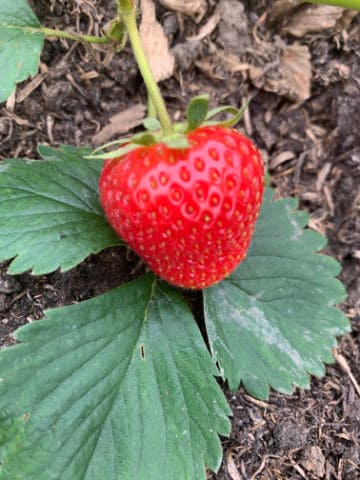
Plant strawberry plants in spring, but not when the ground is frozen. Space about 18 inches (45 cms) apart, with the crown at soil level or very slightly above. The crown is the area where the leaves emerge from the plant and if you plant it below soil level, there is a risk that water could pool around it and rot the crown.
Water the soil around strawberry plants regularly, but avoid watering onto the plant itself.
Keep the strawberry bed weed-free to reduce competition for nutrients and water.
After fruiting, you can cut back plants to increase air flow. You may also get a second flush of strawberries to pick in late summer or early autumn.
Mulching strawberry plants
When fruits start forming, mulching around strawberry plants can lift strawberries off the soil to prevent rotting. Choose organic mulches such as straw, a strawberry mat or even large pebbles to raise the fruit off the ground.
You could grow the strawberry plants in beds with a barrier or sheet mulch to reduce weed growth and reduce splashing from watering and rain. Plastic woven weed suppressing membrane does this job well, but beware of cutting the membrane. The unsecured ends of the woven membrane can unravel and become litter in the garden. Wildlife can become tangled in it, they may eat it. Birds can use it to make their nests.
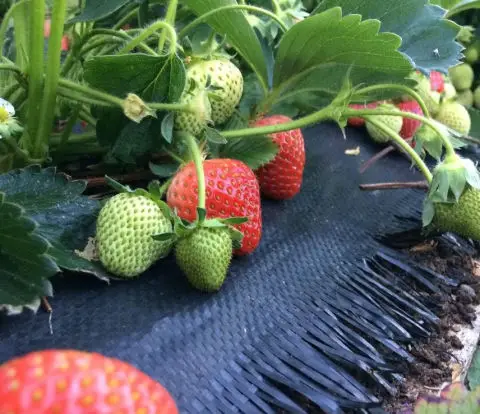
Growing strawberries in containers
Strawberry plants are ideal for growing in pots, buckets, troughs and baskets. Strawberry pots have planting pockets to hold plants away from each other and give them sufficient space to grow.
Ensure that you use a good quality compost and water regularly. You may need to feed the compost in the container regularly. Apply liquid feeds to the soil, not the plant leaves to reduce risk of fungal diseases and molds.
Companion planting strawberries
Strawberries make ideal ground cover plants. Try growing them below asparagus as a companion plant. Research in South America suggests that growing garlic with strawberries can reduce the incidence of fungal molds. Luckily the flavor of the garlic is not passed to the strawberry plants.
Protect strawberry plants
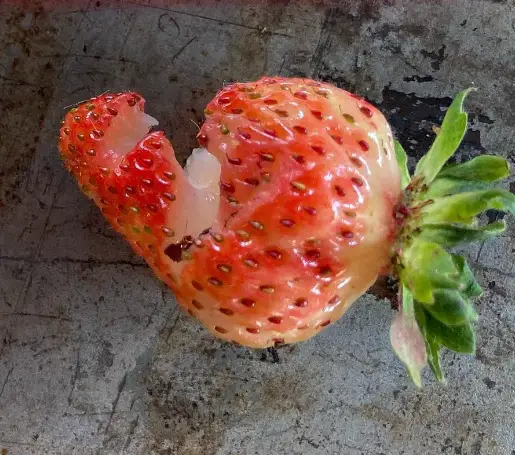
It may be necessary to net strawberries to protect against birds and other wildlife. Ensure that all sides of the netting are firmly held down to ensure that birds do not get into the netting and become trapped inside it. Check the netting regularly for damage and movement.
Propagate more strawberry plants
Strawberry plants become less productive after three to four years. To have the best harvest, refresh the plants in your strawberry bed on a regular basis.
You can buy strawberry plants from reputable suppliers. I’ve purchased some great quality plants from Direct Plants (affiliate link).
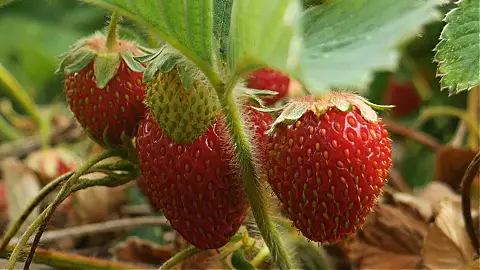
Or if you already have strawberries in your garden, there is a simple way to have many new plants. Each year you are growing strawberries , the plants send out runners with new plants on them. Lift these and replant where you want them to grow.
Remove any runners that you do not want to prevent overcrowding in the strawberry bed.
Fungus and molds that affect growing strawberries
Verticillium wilt
Verticillium wilt is a fungal disease that affects a wide range of plants. It is caused by the fungus Verticillium dahlia, which lives in soil and enters plants through the roots.
Symptoms include a yellowing and wilting of the leaves and early loss of leaves. It may also cause the roots to root which results in reduced growth or for the plant to die.
Verticillium wilt can be difficult or control because the fungus can live in the soil for years. To prevent your strawberry plants succumbing –
- choose varieties that are resistant to verticillium wilt
- do not plant in soil that has shown signs of the fungus being present
- ensure adequate watering and feeding of the soil
- avoid excess nitrogen in the soil
If you have verticillium wilt in your strawberry bed, remove and destroy infected plants, do not add them to the compost heap as the fungus can live in the soil. Plant new plants in a different area of the garden.
Powdery mildew
This is a fungal disease appears as a white powdery film on the leaves and stems of the plants. To control powdery mildew
- Improve air circulation around the plants by thinning out the foliage or pruning the plants.
- Avoid overhead watering, as this can encourage the growth of the fungus. Instead, water the strawberries near the base of the plants.

Anthracnose
This is a fungal disease that causes sunken, dark lesions on the fruit and leaves and can cause growing strawberries to rot. To control anthracnose
- Remove and destroy infected fruit and plant debris to help prevent the spread of the fungus.
- Avoid overhead watering. Water the soil at the base of the plants instead.
Botrytis blight
Strawberry plants display grey or brown spots on the fruit and leaves and botrytis blight can cause fruit to rot. To contol botrytis blight organically
- Remove and destroy infected fruit and plant debris to help prevent the spread of the fungus.
- Avoid overhead watering. Carefully water at the base of the plants instead to avoid splashing.
Gray mold
It appears as a gray or brown mold on the fruit and leaves of strawberry plants. It can cause the fruit to rot and the leaves to yellow and die. To control gray mold organically
- Remove and destroy infected fruit and plant debris to help prevent the spread of the fungus.
- Avoid overhead watering of strawberry plants. Water them at the base of the plants instead.
Recipes using strawberries
There are so many recipes that use strawberries.
They are a key ingredient in desserts like Eton Mess. This simple to make, but indulgent recipe uses cream, meringue and fresh strawberries.
Fancy making your own strawberry jam? Tanya at Lovely Greens offers a delicious 3 ingredient strawberry jam recipe.
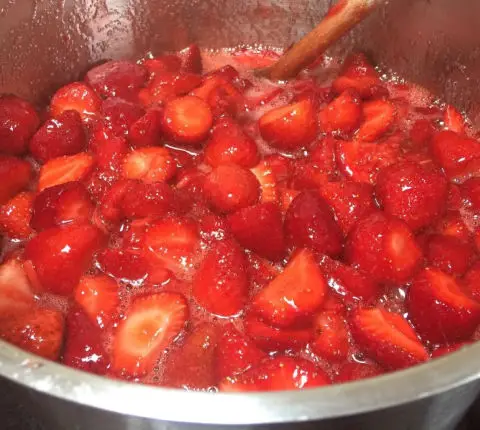
- Showstopper flowers in early summer - June 20, 2025
- Best flowering variegated plants - June 13, 2025
- What to Sow in June | Month by month sowing guide - June 6, 2025
